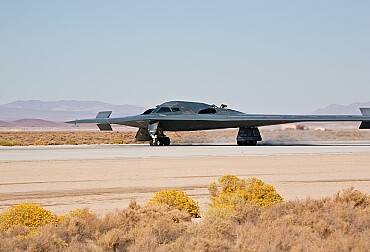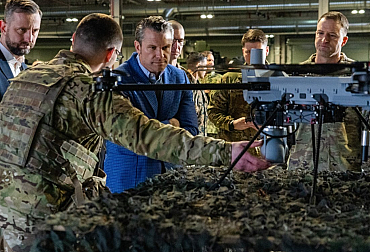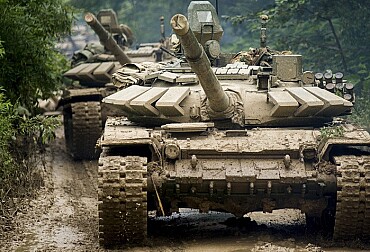The Japanese new defense budget in context
The Japanese government announced that the Ministry of Defense's budget for Fiscal Year 2025 will reach $59 billion, citing a new and more complex security environment and a "new era of crisis."

The Japanese defense ministry will work with a budget that is increased by 7.4 % compared to last year budget. Fiscal year 2025 is in line with previously published Japanese Defense Strategy in 2022 which calls for a more offensive posture of the Japanese Self-Defense Forces. For example, the 2025 budget includes billions of dollars for power projection capabilities, multi-domain operations, or long-range offensive weapons. In addition to these most important capabilities, the new budget includes funds for new missile defense assets or unmanned aerial vehicles. The Japanese Ministry of Defense also plans to boost Japanese Self-Defense Air Force capabilities by funding eight more F-35A and three more F-35B fifth-generation fighter jets. The latter will most likely be deployed on board of the Izumo-class ships which were originally intended as a helicopter carriers such as the U.S. Wasp and America-class amphibious ships. It seems that Japanese Self-Defense Maritime Forces were inspired by the so-called Lightning carrier concept, which aims to put as many F-35B fighter jets on board of Wasp and America-class ships as possible. This move will introduce new offensive and power projection capability much needed in today's security environment in the western Pacific.
The Japanese National Defense Strategy published in December 2022 stresses the changing security environment in Japan’s neighboring countries and regions. The Japanese Ministry of Defense cites China as a top priority and challenge to Japanese defense policy. China steadily increases its defense budget, reflecting its modernization goals for the People’s Liberation Army (PLA). The PLA should become a world-class force by the middle of the 21st century. The PLA also continues to operate around Japanese territory, especially the Senkaku Islands in the East China Sea north of Taiwan.
The second priority and direct threat is North Korea and its efforts to modernize its missile arsenal by acquiring various launch platforms for both ballistic and cruise missiles with range to hit not only Japan but the continental U.S. as well.
The third priority and challenge are Russian behavior after the Russian invasion of Ukraine in 2022. The Russian armed forces are enhancing their activities in the Far East and in areas surrounding Japan. The Japanese Ministry of Defense is also concerned with the cooperation between Russia and China.
Although the Japanese modernization and improvement of their capabilities is not aimed at other democratic countries in the region, it could very easily contribute to a security dilemma, especially alongside military modernization in the Republic of Korea. Its armed forces are planning to acquire power projection capabilities such as aircraft carrier similar to the U.S. Navy Nimitz-class carriers and nuclear-powered attack submarines to counter the North Korean communist regime and its rogue behavior. It was also reported that, according to recent public opinion polls, the Korean public is not against the deployment of nuclear weapons to Korean territory even if it means developing their own nuclear weapons. Acquiring these capabilities could alter the basic military balance in the region. The Black Swan scenario – nuclear weapons in the Korean Republic – could also lead not only to a Japanese reaction, as mentioned before, but also to a Chinese and Russian reaction. Both China and Russia could respond with additional support to North Korea by, for example, providing missile technologies, fighter jets, or air defense systems.
On the other hand, this doesn't mean that Japan or the Korean Republic should avoid modernizing and improving their armed forces. Modernization is generally positive, given the evolving security environment, particularly in the Western Pacific, which is increasingly important to global economic stability. Nevertheless, both Japan and South Korea should avoid rapid modernization, especially when it comes to offensive capabilities.
Such actions could lead to the aforementioned security dilemma and increase the risk of conflict between democratic countries—a highly undesirable outcome in light of the Great Power Competition between the U.S. and China and the broader competition between democracies and autocracies.








